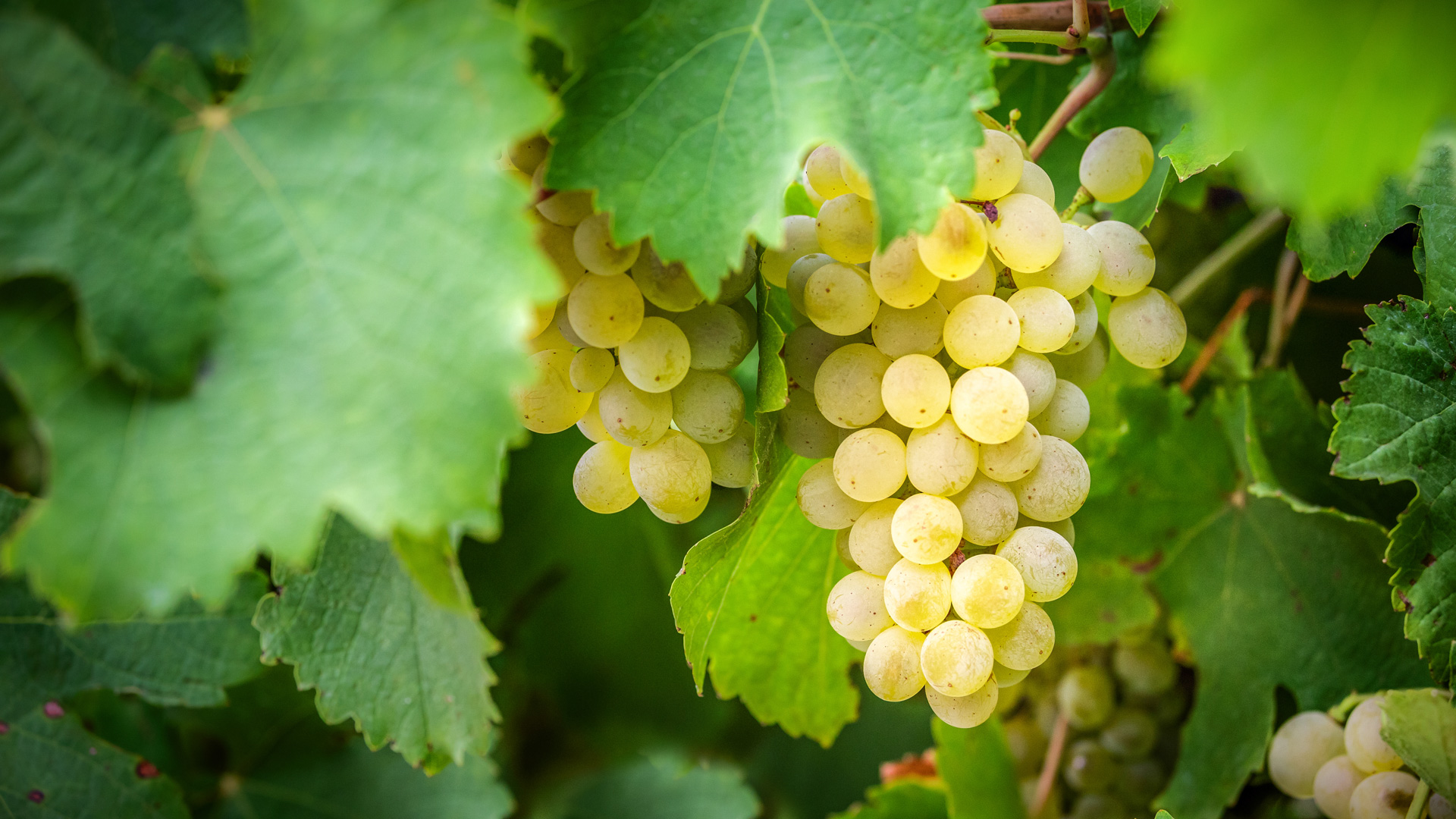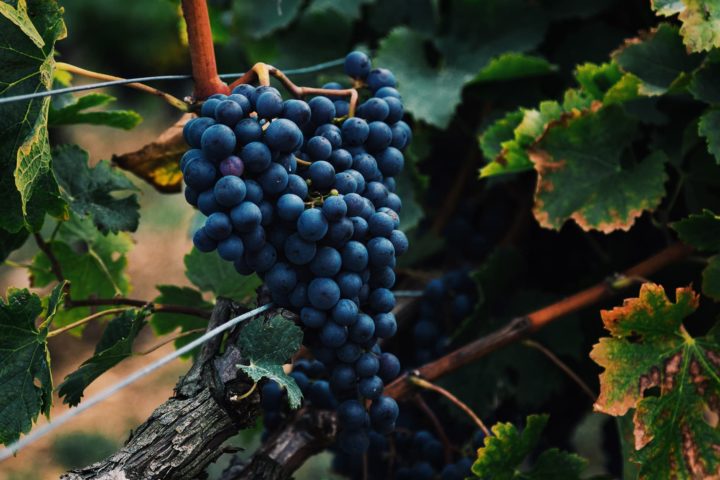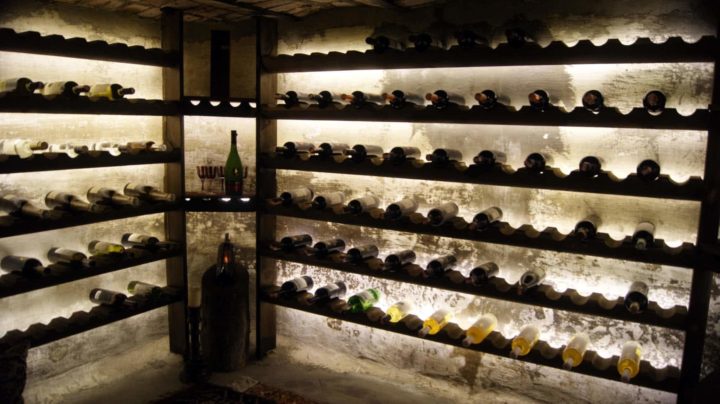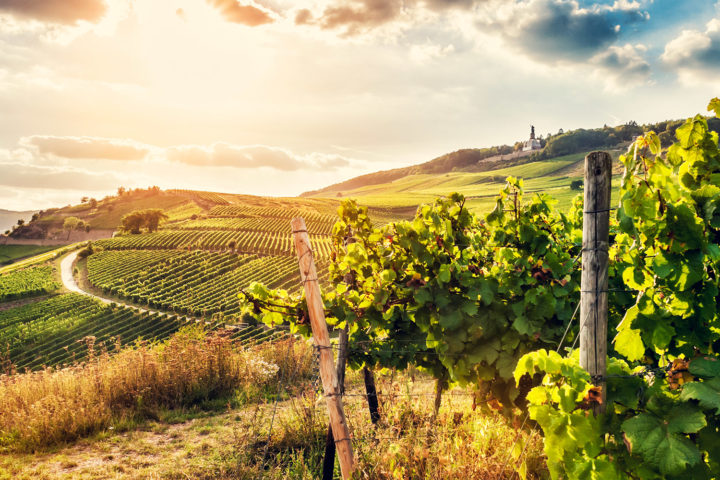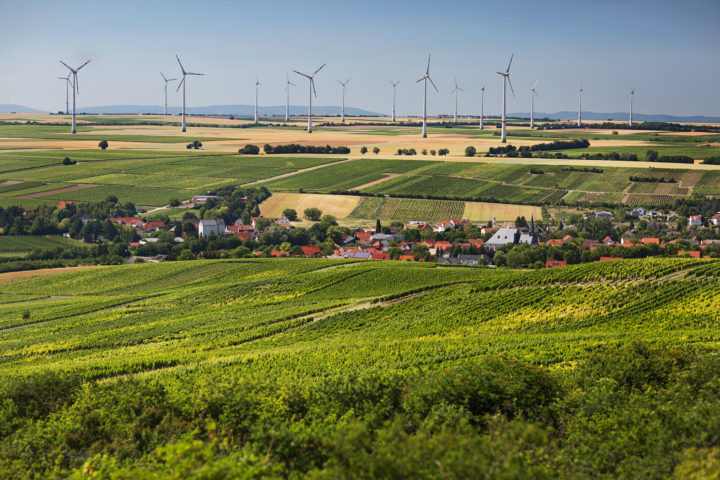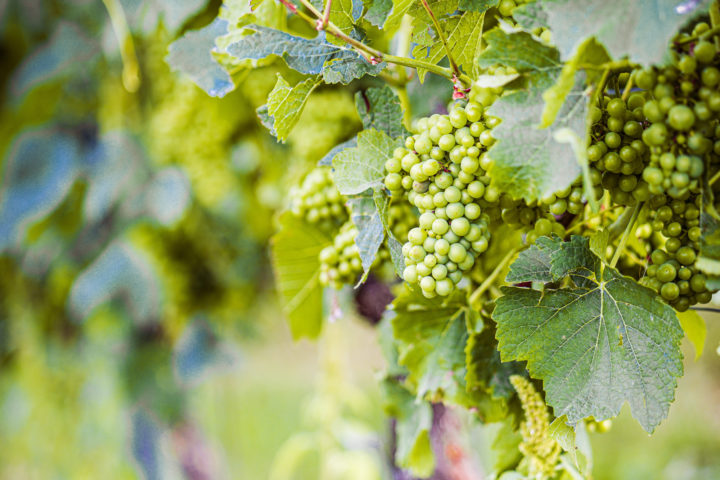With around 200,000 hectares under vine, the Chardonnay grape variety is the French rock star of white grape varieties. It is the most widely grown white wine grape in the world and can be found in the hot growing regions of Australia as well as in the coolest wine growing regions such as Great Britain or Denmark.
The wide distribution is mainly due to its excellent adaptability. Because despite its reputation as the chameleon among varieties, Chardonnay has the ability to produce wines of extremely high quality in a wide range of climatic conditions. But the motto also applies to him: Nowhere is more beautiful than at home. He feels particularly at home in his Burgundian homeland. The best Chardonnays in the world are found there – at least according to the French.
Origin and history of Chardonnay
A common misconception is that Chardonnay originated in the Middle East and came to France with the Crusaders. As genetic analysis shows, the grape variety is a natural cross between Heunisch and Pinot. However, the exact type of Pinot has not yet been determined beyond doubt. The reason for this is the high genetic similarity among Pinot species. In the meantime, it is assumed that it was Pinot Noir. More detailed genetic studies have yet to confirm this suspicion.
However, the research revealed that both parents of Chardonnay come from Burgundy and finally solved the mystery of the origin of the grape variety. The fairy tale about the influence of the crusaders can thus be put to rest. Through the Benedictines, Chardonnay later spread throughout Europe. By the way, the grape varieties Auxerrois, Aligoté and Gamay also originated from spontaneous crossings between Heunisch and Pinot.
The first written mention of Chardonnay took place in the village of Saint-Sorlin, now La Roche-Vineuse, and dates back to between 1685 and 1690, where it is known as Chardonnet. An earlier mention from 1583 cannot be clearly assigned.
Its namesake is the commune of Chardonnay in the region of Bourgogne-Franche-Comté, Saône-et-Loire, where it is still mainly grown today.
Breakthrough for the Chardonnay – ” The Judgement of Paris”.
At the end of the 1970s, Chardonnay began its worldwide triumphal march and rapidly gained popularity. The trigger was a wine tasting that went down in history as the ‘Wine Jury of Paris’. In May 1976, wine merchant Steven Spurrier hosted a blind tasting of Chardonnays and Cabernet Sauvignons from California and Burgundy in Paris. The jury: the most respected wine critics in France at the time, including Aubert de Villaine, winemaker and partner of the legendary “Romanée-Conti” winery.
Up to here, actually, not a noteworthy event, because wine tastings were held quite often even then. The result of this blind tasting hit the wine world deep in the core.
Until this event, French wines had a supremacy on the market and were considered the qualitative spearhead. This “misalignment” was corrected once and for all that day. The end of the blind tasting almost ended in fisticuffs on the part of the jurors, who accused Spurrier of cheating.
The result: The 1973 Chateau Montelena Winery emerged as the best Chardonnay – a Californian. Among the top 10 Chardonnays tasted, there were only four French. While headlines filled magazines around the world reporting the demise of French supremacy, the result was hushed up in France.
A similar picture emerged for the red wines: What was dubbed “The Greatness of France” during the blind tasting later turned out to be a Californian Cabernet Sauvignon. Again, a Californian took first place.
Cultivation – Calcareous soils and warm climate are crucial for good Chardonnay
Chardonnay, compared to other grape varieties, is quite undemanding, but prefers calcareous to calcareous soils. It grows on almost any substrate, with the potential to produce wines of high quality. Only very poor in lime and moist soils are unsuitable for its cultivation.
In terms of climate, Chardonnay also has few requirements and thrives in both hot and colder zones. Although the grape variety originated in temperate Burgundy, it is equally found in the hot regions of California or in cold Great Britain.
No wonder, then, that it is the most widely grown white wine grape. All right, those who take a closer look will now object that the Airén grape variety is the most cultivated white wine grape variety. However, the Airén has almost no importance for the wine world, since it is used almost exclusively for the production of Spanish brandies – which is why few people even know of its existence. One can therefore turn a blind eye and allow the Chardonnay its top position.
Growing areas – Where does Chardonnay not actually grow?
As already explained, Chardonnay makes few demands on its location, which is why it is grown in almost every wine-growing country in the world. However, really high-quality and noteworthy wines can be reduced to a handful of growing areas – with a few exceptions.
France – home country of Chardonnay
The most renowned sites for Chardonnay are found in its native France, more specifically on the calcareous soils of the vineyards in Burgundy. The most famous wine-growing areas are called Meursault, Corton-Charlemagne, Chablis and Montrachet. The latter is considered the most renowned of all Chardonnay sites, which is why it is not uncommon to have to shell out half a fortune for a Montrachet Grand Cru. The French writer Alexandre Dumas the Elder once said, “You have to drink wine from Montrachet on your knees and with your hat off.” Whether that’s true is just as eminently debatable as whether you really have to have tasted a wine for several hundred euros to understand anything about it.
“Wine from Montrachet must be drunk on your knees and with your hat pulled.”
Alexandre Dumas the Elder
In addition to Burgundy, Chardonnay plays a decisive role especially in Champagne. Here the grape variety serves for the base wines of champagne production. Thus, a classic champagne consists of 50 to 70 percent of a base wine of the grape variety. Since Chardonnay is the only white grape variety allowed in Champagne, a Blanc de Blanc Champagne is always a pure Chardonnay.
United States of America – More elegant than from Burgundy?
The U.S. has had a very special relationship with its favorite grape since 1976, when in what is arguably the most famous blind tasting in history (the Paris Wine Jury), American Chardonnays and Cabernet Sauvignons competed against their counterparts from France and won.
Shortly after this event, demand for California Chardonnay jumped. Today, the United States is the second largest producer of Chardonnay in terms of vineyard area.
While warm California produces full-bodied, high-alcohol Chardonnays, wines from cooler regions like Washington State are known for their fruity, light and elegant styles.
Australia
Chardonnay has also found a home Down Under. With over 21,000 hectares, Australia positions itself in third place among the countries with the largest area under Chardonnay vines.
The highest quality wines are found in the Margaret River region, in the southwest of the continent, where climatic conditions are comparable to those in Bordeaux.
Other well-known growing areas for Chardonnay in Australia:
- Adelaide Hills
- Mornington Peninsula
- Yarra Valley
- Hunter Valley
Italy
Chardonnay was not known as a separate grape variety in Italy for a long time. Its high ampelographic similarity with Pinot Blanc ensured that it was indistinguishable from it for a large period of time. This error led to vineyards that were cultivated in mixed set, that is, different grape varieties within one vineyard. Until the 1980s, such wines were marketed under the name Pinot Bianco. The berries of Chardonnay have a more intense color than those of Pinot Blanc. This circumstance led to it being known in South Tyrol as Gelber Weißburgunder.
Today Chardonnay grows in Italy on almost 20,000 hectares. The largest and best-known regions are found almost exclusively in the immediate vicinity of the Alps. Worth mentioning here are the areas of Friuli, South Tyrol, Trentino and Veneto.
Other growing areas
Besides the above-mentioned areas, Chardonnay is grown in almost every wine-producing country in the world. In addition to better-known wine-producing countries such as South Africa, Spain and Germany, it can also be found in more unusual places such as Japan, Brazil, Peru, Denmark, Great Britain and even Myanmar.
In Germany, its largest growing areas are in the Palatinate, Rheinhessen and Baden.
Top 10 growing countries for Chardonnay by vineyard area in hectares
| Country | Vineyard area in ha |
|---|---|
| France | 45.243 |
| USA | 40.846 |
| Australia | 27.773 |
| Italy | 19.700 |
| Chile | 13.082 |
| South Africa | 8.278 |
| Spain | 6.958 |
| Argentina | 6.473 |
| Republic of Moldova | 5.134 |
| New Zealand | 3.911 |
Wood and steel – Chardonnay aging and style
Chardonnay has the reputation of being the grape variety that responds most strongly to cellar measures. In addition, it is considered one of the few white wine varieties that can benefit from aging in wooden barrels. For this reason, two types of styles are usually found, which differ mainly in the effect of the expansion.
Classical stunners: Chardonnay from the wooden barrel
Chardonnay aged in wooden barrels represents the classic and is characterized by its creamy, fat character. Often, such Chardonnays undergo a malolactic fermentation process that converts the racy malic acid into creamy lactic acid. The lactic acid bacterium Oenococcus oeni is responsible for this process. During this malolactic fermentation it produces diacetyl, which provides a light buttery aroma. In small quantities this is desirable and has a positive effect on the complexity of the wine. The typical aromas of Chardonnays from the wood barrel are: tropical fruits, vanilla, butter and light smoky notes.
Fresh and fruity: aging in steel tank
The other type is aging in stainless steel – as is common for white wines. Without the contact with oxygen and with the absence of lactic fermentation, the wine retains its fruitiness. Chardonnay aged in steel can be identified by its fruity nose. The aromas of honeydew melon, ripe apples and orange peel are denoted for this style of wine. The difference is particularly clear on the palate: the wines from the steel tank have a refreshing acidity, while those from the wooden barrel have a mouthfeel more reminiscent of yogurt or whey.
Another difference concerns the shelf life. While Chardonnays from steel should be enjoyed young and fresh, high-quality wines from wood barrels can be really fun after 20 years. Here, too, the rule is: the higher the quality of the wine, the greater its storage potential.
What food goes well with Chardonnay?
The culinary accompaniments are, like so many things with this grape variety, quite versatile and depend mainly on the style of the wine. However, one thing is a law: as a champagne Chardonnay always goes.
Young and fruity wines
For Chardonnays from the steel are suitable light dishes such as seafood and white fish. However, its racy acidity makes the wine hold its own against creamy and greasy mushroom and pasta dishes.
Chardonnay from the barrique
The great wines from the wood are more suitable for roasted veal, poultry or cheese.
